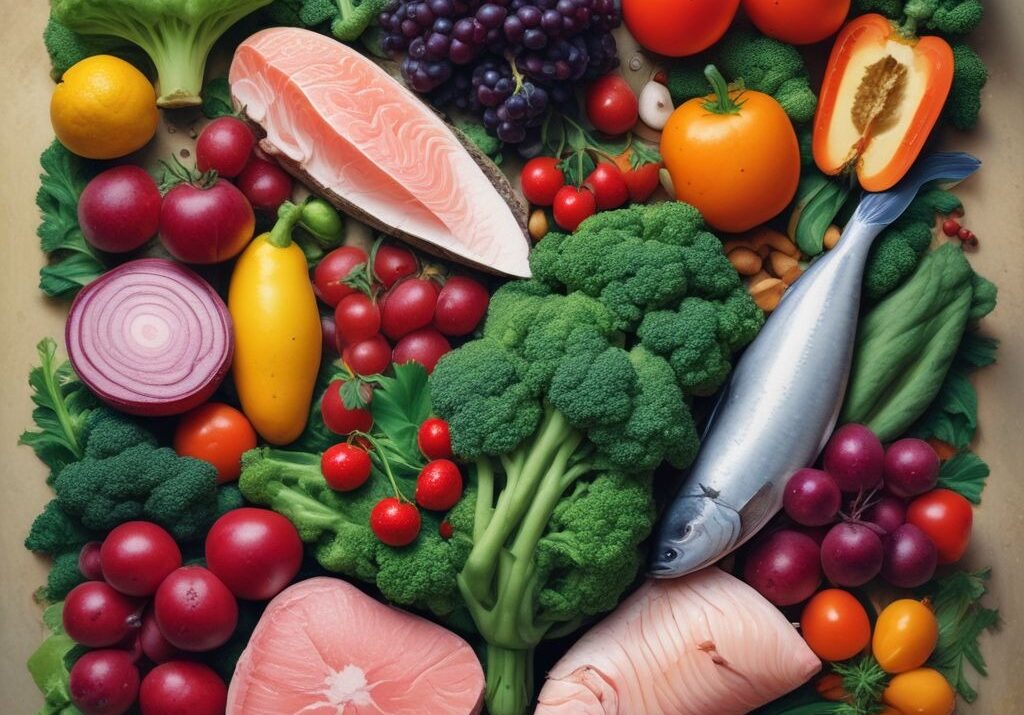Inflammation is your body’s natural defense against infections and injuries, but when it becomes chronic, it can contribute to serious health issues like heart disease, arthritis, and diabetes. The good news? Your diet plays a crucial role in controlling inflammation. Incorporating the most anti-inflammatory foods into your meals can support your body’s healing process and promote overall well-being.
This guide explores the top 10 most anti-inflammatory foods, the anti-inflammatory food chart, the anti-inflammatory food pyramid, and practical ways to make these foods a part of your daily routine.
Anti-Inflammatory Food Chart: The Best Foods to Reduce Inflammation
The anti-inflammatory foods chart helps categorize foods based on their ability to fight inflammation. Foods rich in antioxidants, healthy fats, and essential nutrients best keep inflammation at bay.
1. Fatty Fish (Salmon, Mackerel, Sardines)
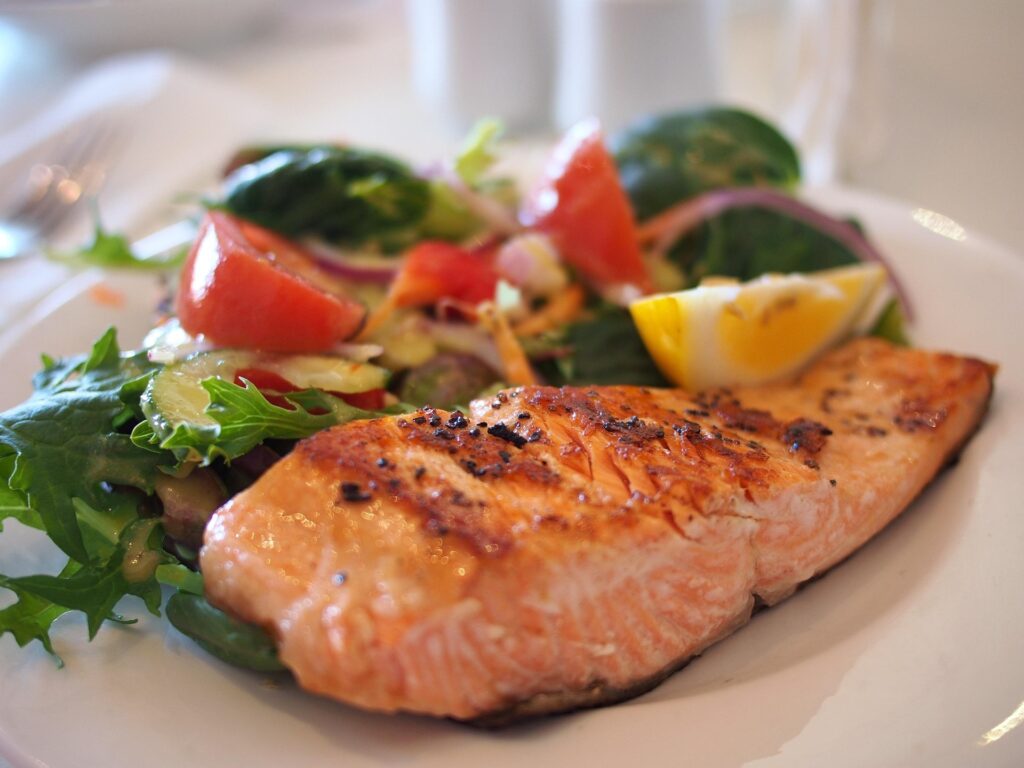
Fatty fish are excellent sources of omega-3 fatty acids, which are well known for their ability to lower inflammation.
Health Benefits:
- Helps reduce joint pain and stiffness.
- Supports heart and brain health.
Grill or bake salmon with herbs and lemon for a flavorful anti-inflammatory meal.
2. Leafy Greens (Spinach, Kale, Swiss Chard)
Leafy greens are packed with vitamins, minerals, and powerful antioxidants that help combat oxidative stress.
Health Benefits:
- Boosts immunity and improves digestion.
- Helps detoxify the body naturally.
Blend kale or spinach into smoothies or toss them into salads for extra nutrition.

Anti-Inflammatory Food Pyramid: Structuring a Healthy Diet
The anti-inflammatory foods pyramid provides a guide to prioritizing nutrient-rich foods that reduce inflammation. The base consists of vegetables and fruits, followed by whole grains, healthy fats, and lean proteins.
3. Berries (Blueberries, Strawberries, Raspberries)
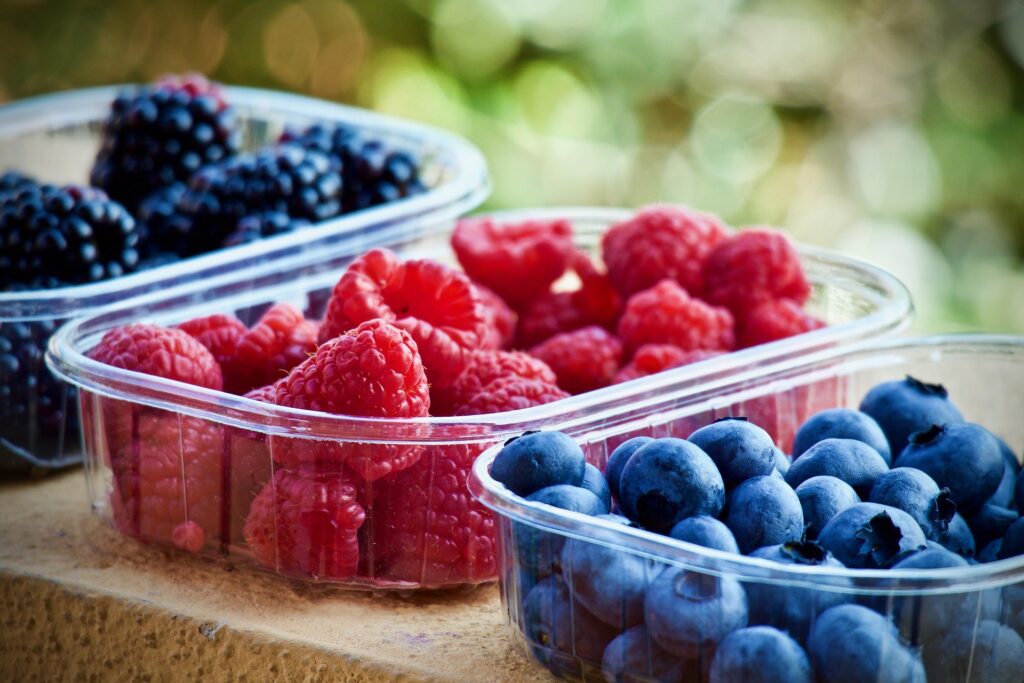
Berries are small but packed with antioxidants that help lower inflammation and support overall health.
Health Benefits:
- Protects cells from damage and reduces oxidative stress.
- Supports brain and heart health.
Add fresh berries to oatmeal, yogurt, or smoothies for a tasty and nutritious trea
4. Nuts and Seeds (Almonds, Walnuts, Flaxseeds, Chia Seeds)
Nuts and seeds provide healthy fats, fiber, and plant-based protein, making them great for reducing inflammation.
Health Benefits:
- Helps improve cognitive function and heart health.
- Supports weight management and gut health.
Snack on a handful of almonds or sprinkle flaxseeds over your morning cereal.
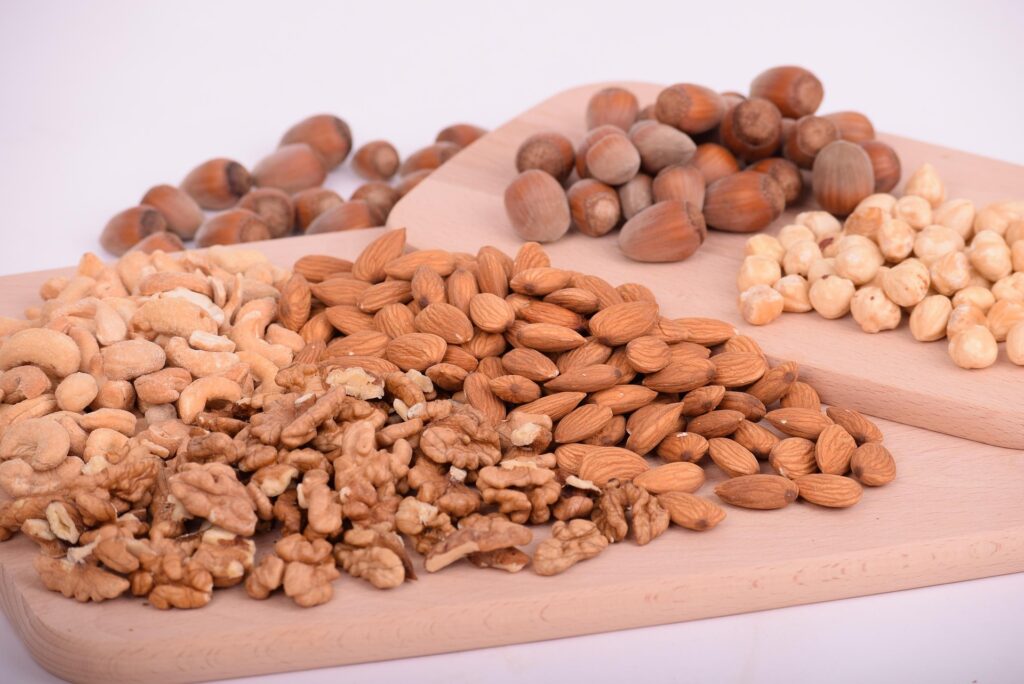
Anti-Inflammatory Meals: Simple and Delicious Recipes
Incorporating the most anti-inflammatory foods into your diet doesn’t have to be difficult. Here are some easy ways to create nutritious and flavorful anti-inflammatory meals.
5. Turmeric (A Golden Healing Spice)
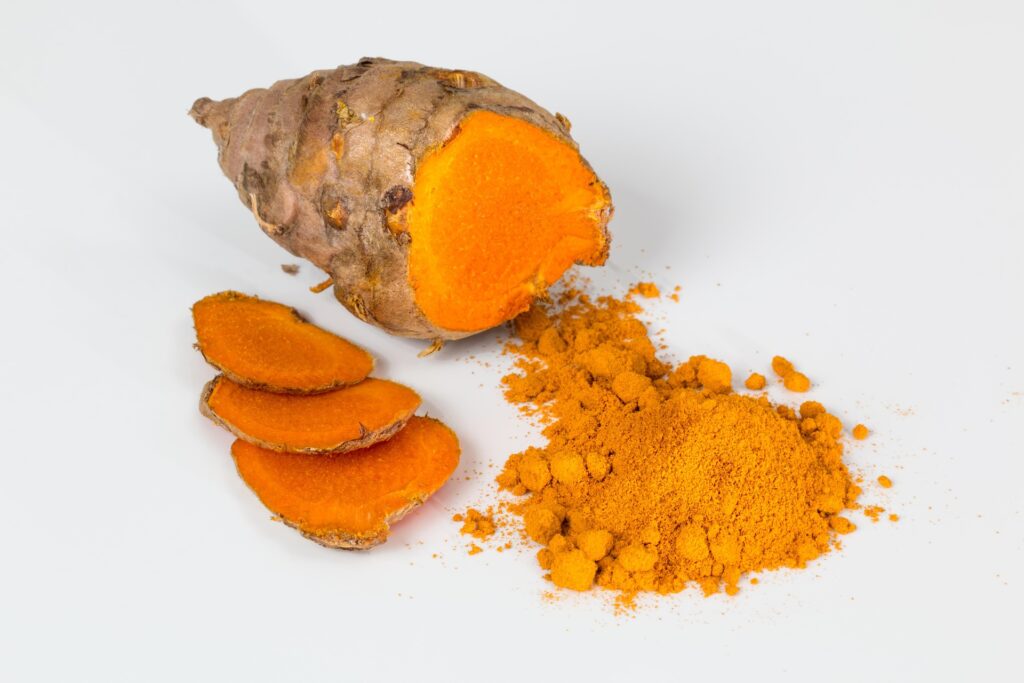
Turmeric contains curcumin, a powerful compound known for its ability to fight inflammation.
Health Benefits:
- Helps ease joint pain and muscle soreness.
- Supports gut and liver health.
Stir turmeric into soups, stews, or golden milk for a warm and nourishing drink.
6. Ginger (Nature’s Anti-Inflammatory Powerhouse)
Ginger is widely used for its medicinal properties and ability to ease inflammation.
Health Benefits:
- Relieves muscle pain and menstrual discomfort.
- Aids digestion and boosts immunity.
Add fresh ginger to teas, stir-fries, or homemade salad dressings.

7. Olive Oil (A Staple for Heart Health)

Extra virgin olive oil is packed with polyphenols and monounsaturated fats that help combat inflammation.
Health Benefits:
- Protects against heart disease.
- Improves skin health and brain function.
Drizzle olive oil over salads or use it as a cooking oil for roasted vegetables.
8. Tomatoes (A Nutrient-Dense Superfood)
Tomatoes are rich in lycopene, an antioxidant known for reducing inflammation and promoting heart health.
Health Benefits:
- Lowers the risk of chronic diseases.
- Supports skin health and vision.
Cook tomatoes in olive oil to enhance their nutrient absorption and flavor.
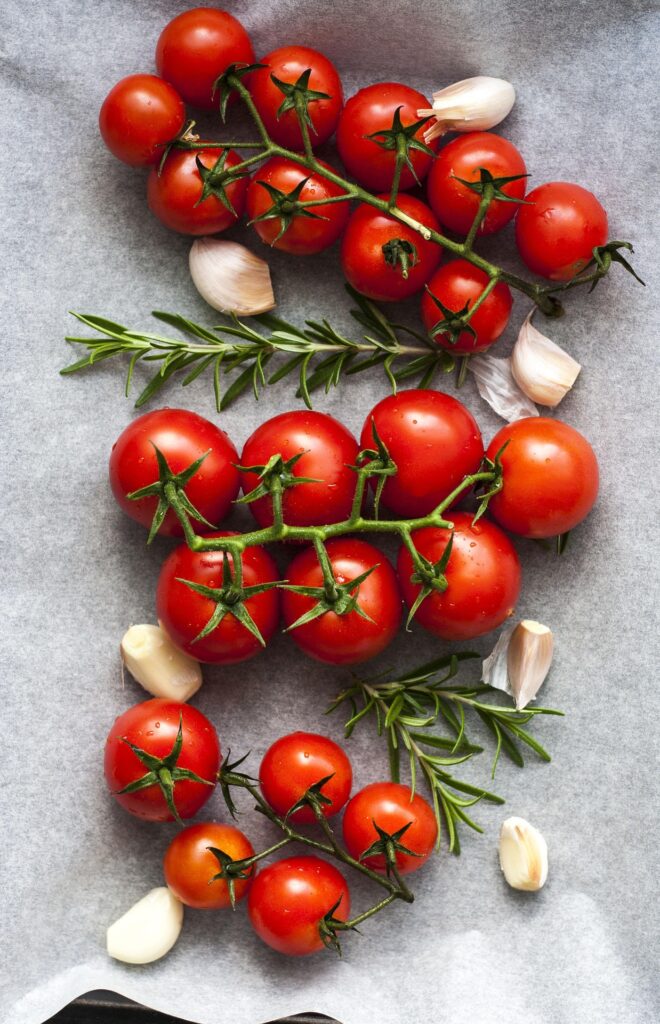
9. Garlic (A Natural Immune Booster)
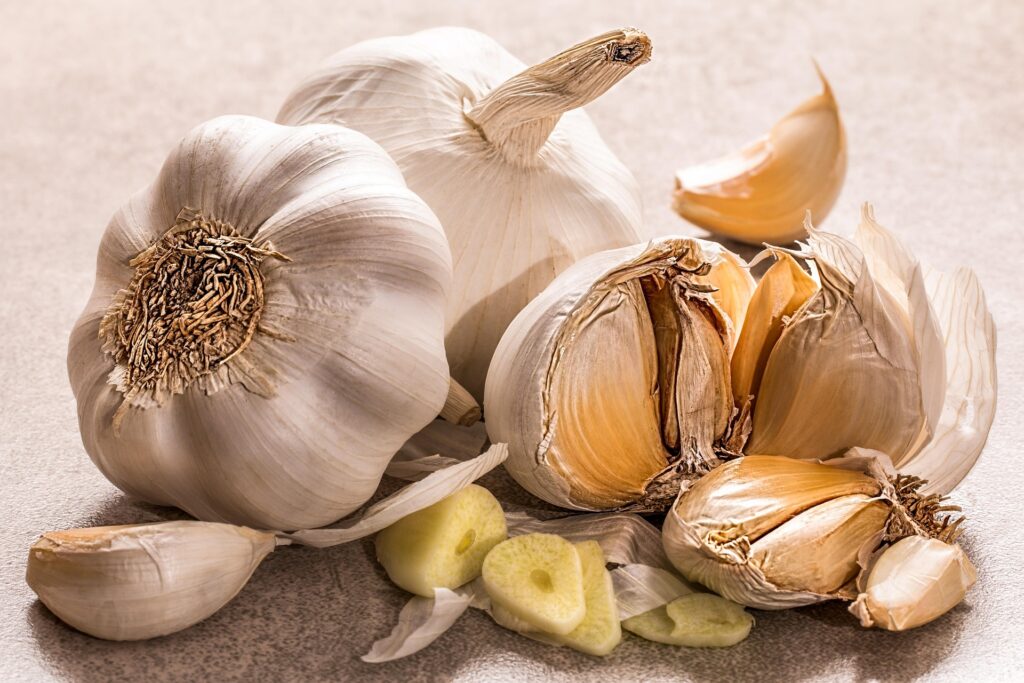
Garlic contains sulfur compounds that provide powerful anti-inflammatory benefits.
Health Benefits:
- Strengthens the immune system.
- Helps regulate blood pressure and cholesterol.
Crush fresh garlic and let it sit for a few minutes before cooking to activate its beneficial compounds.
10. Green Tea (A Powerful Antioxidant Drink)
Green tea is packed with catechins, which help reduce inflammation and support overall health.
Health Benefits:
- Supports metabolism and brain function.
- Reduces the risk of chronic illnesses.
Swap your morning coffee for a cup of green tea to enjoy its refreshing and anti-inflammatory benefits.

Sample 21-Day Anti-Inflammatory Meal Plan
Here, we will give you a sample 21-day anti-inflammatory meal plan which can help you to get faster results.
Week 1: Detox and Reset
- Breakfast: Green smoothie with spinach, banana, chia seeds, and almond milk.
- Lunch: Quinoa salad with chickpeas, cucumbers, tomatoes, and olive oil dressing.
- Dinner: Grilled salmon with steamed broccoli and sweet potatoes.
- Snacks: Handful of walnuts, turmeric tea, or hummus with carrot sticks.
Week 2: Nourishment and Healing
- Breakfast: Oatmeal with blueberries, flaxseeds, and almond butter.
- Lunch: Lentil soup with whole-grain toast.
- Dinner: Stir-fried tofu with bell peppers, ginger, and brown rice.
- Snacks: Green tea, mixed nuts, or dark chocolate (85% cocoa).
Week 3: Sustaining an Anti-Inflammatory Lifestyle
- Breakfast: Scrambled eggs with sautéed kale and avocado.
- Lunch: Grilled chicken with quinoa and roasted vegetables.
- Dinner: Baked cod with asparagus and a side of wild rice.
- Snacks: Herbal tea, Greek yogurt with berries, or roasted almonds.
How to Include the Most Anti-Inflammatory Food in Your Diet
- Follow the Anti-Inflammatory Food Chart: Prioritize foods that reduce inflammation and eliminate processed items.
- Use the Anti-Inflammatory Food Pyramid: Structure your meals with a balance of vegetables, fruits, healthy fats, and lean proteins.
- Incorporate Anti-Inflammatory Meals: Experiment with simple and delicious recipes featuring these nutrient-rich foods.
- Stay Consistent: Make a habit of eating at least 2-3 anti-inflammatory foods daily to experience long-term health benefits.
Additional Tips for an Anti-Inflammatory Lifestyle
While diet plays a major role in reducing inflammation, lifestyle changes also make a difference. Here are some additional tips to complement your anti-inflammatory eating habits:
- Stay Hydrated
Drinking enough water helps flush out toxins and supports digestion. Herbal teas and infused water are great alternatives to sugary drinks.
- Get Regular Exercise
Physical activity helps reduce inflammation by improving circulation and regulating immune responses. Engage in low-impact activities like yoga, swimming, or walking.
- Manage Stress
Chronic stress triggers inflammation in the body. Practice mindfulness, meditation, or deep breathing exercises to lower stress levels.
- Avoid Processed Foods
Refined sugars, processed meats, and trans fats contribute to inflammation. Focus on whole, natural foods for optimal health.
Conclusion
Reducing inflammation naturally starts with the right dietary choices. Including the most anti-inflammatory food in your meals can improve your overall health, boost immunity, and lower the risk of chronic diseases. By following the anti-inflammatory food chart, structuring meals with the anti-inflammatory food pyramid, and preparing nourishing anti-inflammatory meals, you can enjoy a healthier, inflammation-free lifestyle. Start incorporating these foods today and take charge of your well-being!
Read more about diet here
Related post:





